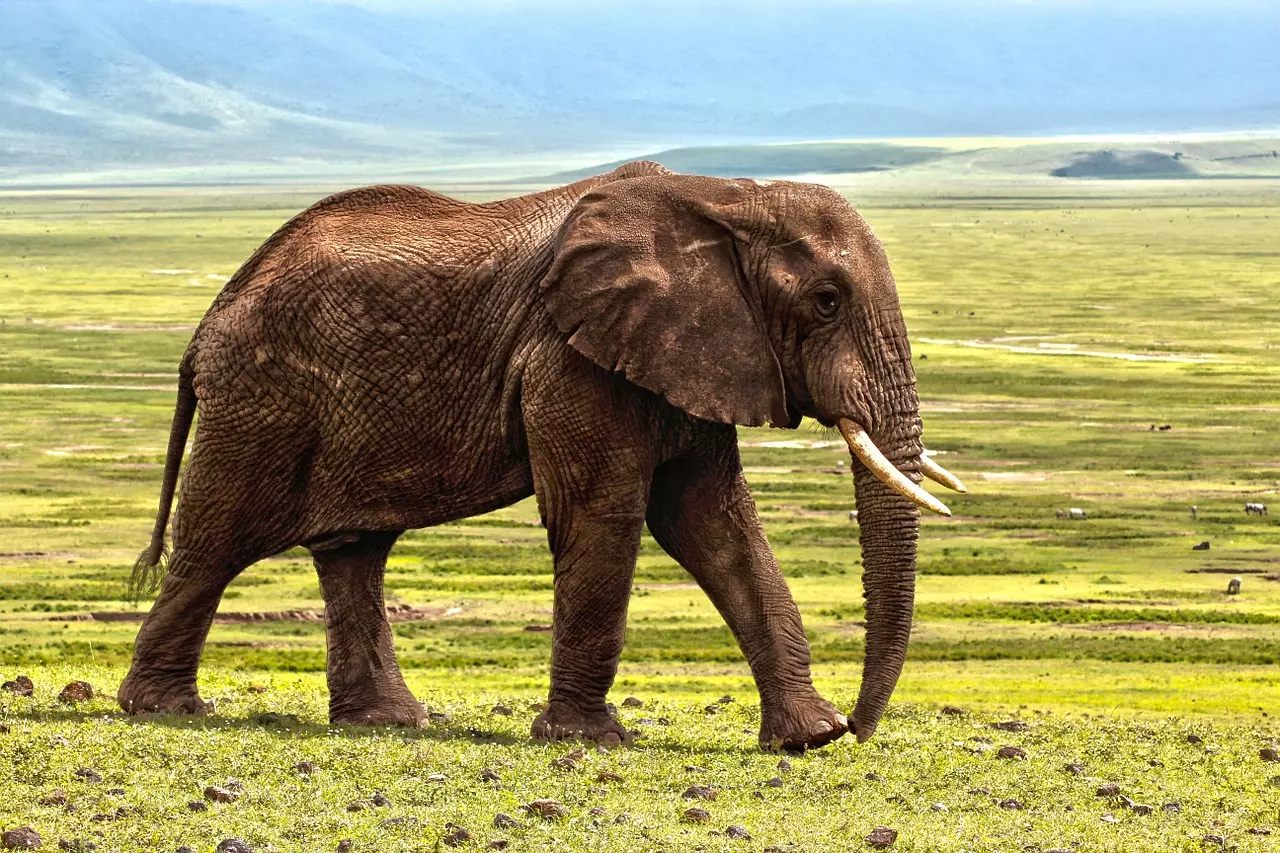[Originally published as Exquisite Design: The Secret Wonders of an Elephant’s Trunk]
The elephant’s trunk, one of its most prominent and distinctive features, is not just a tool for eating and drinking. It’s a lifeline. The sheer size of these magnificent creatures, the largest terrestrial animals on earth, draws much attention. People love to watch these giants at zoos where a fully grown adult consumes an average of 330–375 lbs. of food and drinks between 18 to 26 gallons daily.
It’s their trunk that makes all this possible. If an elephant were to lose its trunk, it would not survive.
Design and Structure
The elephant’s trunk is a remarkable organ that shows a masterful design in the carefully planned operational details that only come from the almighty, benevolent Creator.
When you observe an elephant’s head, you will notice that the upper lip of the mouth and nose become one, the trunk, with its forcible tusks next to it. The lower mouth, called the mandible, is triangular and hidden by the prominent trunk.
The elephant’s trunk has neither bones nor cartilage; it is made entirely of complex muscular formations oriented in three different directions. A popular misconception is that the elephant’s trunk contains thousands of muscles. In reality, it has only 17 major muscles, eight on each side and one down the center.
The trunk is unique because it consists of 150,000 bundles of muscle fibers, all connected with connective tissue, allowing for a complex range of movement and function. It is incredibly agile, strong, sensitive, and multifunctional, making it one of the most unique organs in the animal kingdom.1
Ready for Work
An elephant depends upon its trunk for many functions, not just eating and drinking. Its trunk is a powerful extension that can do extraordinary work. Jacob Shell, a geographer who wrote the book Giants of the Monsoon Forest, researched and described in an engaging narrative how elephants interacted with the local people who live on the elephant trails in the remote forest lands that connect with India and Burma.
Shell was amazed by the strength and agility of the Asian elephant. It could use its trunk while moving large logs weighing hundreds of pounds, skillfully laying them down in the exact locations the trainer determined. When hungry, it can tear tree branches down with its trunk or uproot a small tree as a delicacy. At the same time, it can become a self-defense weapon; a rigid trunk swing can easily break a human spine in a second or deliver a fatal blow to a big cat. Shell observes, “The elephant before me, along the cliff of the central Burmese teak hill, was using her trunk as a buttress, brake, steering mechanism, and feeler all at once.” 2
As a Powerful Vacuum Cleaner
Despite its many other uses, the trunk is after all an elongated nose, essential for the elephant’s respiration. Their trunk can be used as a leaf blower by exhaling to remove the dust off their backs. It can also act like a vacuum cleaner, with a powerful suction force that inhales at speeds comparable to the speed of bullet trains. The muscular walls of the trunk contract and expand, creating a force that brings the needed enormous amounts of airflow to the elephant’s large lungs with remarkable efficiency. In addition, the elephant’s trunk regulates the temperature and humidity of the inhaled air by warming it and moistening it as a level of protection.3
An elephant’s trunk can be an efficient fire hose. It can suck in and hold nine to ten liters of water by expanding the walls of the trunk to release at will. It drinks by pointing this spout into its triangular mouth. It can shower water over its back to cool off, clean off, or get rid of pesky insects.
As a Communicator
Elephants are social animals that interact with each other in various ways. The trunk plays a vital role in their communication. Just as in humans, the voice box, or larynx, is where the vocal cords are found. An elephant uses its trunk as an amplifier and modulator by vibrating columns of air within it.
Their loud, excited trumpeting sound is the most familiar. When they are angry, they make a hissing rumble. When feeling pleasure, they make a purring vibration.4 They can even pinch the end of their trunks while inhaling, much like holding the neck of a balloon, to make a loud squealing noise to get attention.
The elephant’s trunk is used for social touch. They greet each other by extending their trunks toward each other. They will even entwine their trunks in a welcoming and caring gesture. This interaction is essential to building stronger herd bonds to keep social coherency and others away.
As a Sensor
The elephant’s trunk sends inhaled air to the top of the mouth, where Jacobson’s organ is located. The trunk is also an excellent collector of particles so that chemical information can be accurately analyzed. It has an excellent olfactory system that detects many kinds of odors from miles away and sends chemical signals to the brain. They also use their trunks curiously to collect different smells from other animals. Elephants have over 2 ½ times more receptors than dogs. Studies have reported that the African elephant’s sense of smell is so strong that they can sniff out landmines.5
Along with their extraordinary sense of smell, the elephant trunk is a fantastic tool for the sense of touch. Numerous nerve endings are located at the end of the trunk, similar to the fingertips on our hands. Elephants have fingers, too. The Asian Elephant has two fingers, while the African has one. They have refined precision movements to grab objects, like picking up a coin on the floor or crushing a walnut shell to get the nut.
Conclusion
God is in every detail. When we focus and take time to look more deeply at the things our loving Creator has made, we see Him clearly. Hence, we are without excuse, as it says in Romans 1:20. The invisible God has manifested Himself in both the living and nonliving worlds so we can experience Him; astounded at His qualities here on earth, we can’t wait to see what He has planned for us when we are face to face with Him at the end. Our Lord demonstrated his creativity by creating the elephant with a long nose and misplaced upper lip. This giant terrestrial animal has undoubtedly found its place in the animal kingdom not by its looks but by its unique qualities, especially its marvelous trunk, which brings shame to those who claim that evolutionary change could produce such exquisite design.
References
- herd.org.za/blog/are-there-really-150000-muscles-in-an-elephants-trunk-all-your-elephant-trunk-questions-answered
- Jacob Shell, Giants of the Monsoon Forest: Living and Working with Elephants (New York: W.W. Norton Company, 2019) 42.
- elephantcorridor.com/do-elephants-breathe-through-their-trunk-or-mouth/
- Karl Groning and Martin Saller, Elephants: A Cultural and Natural History (Cologne, Germany: Konemann, 1999) 75
- theconversation.com/how-african-elephants-amazing-sense-of-smell-could-save-lives-85626







